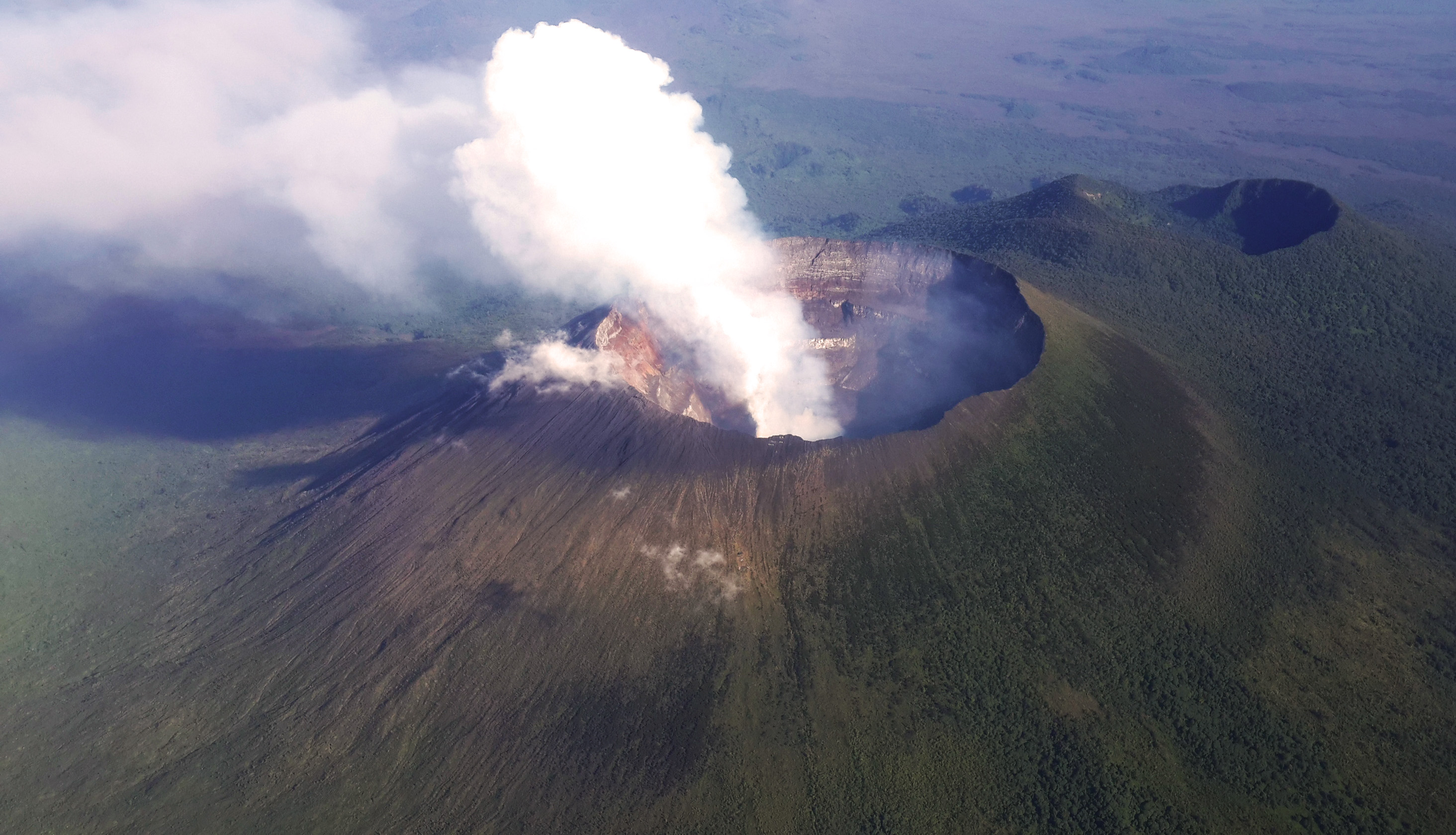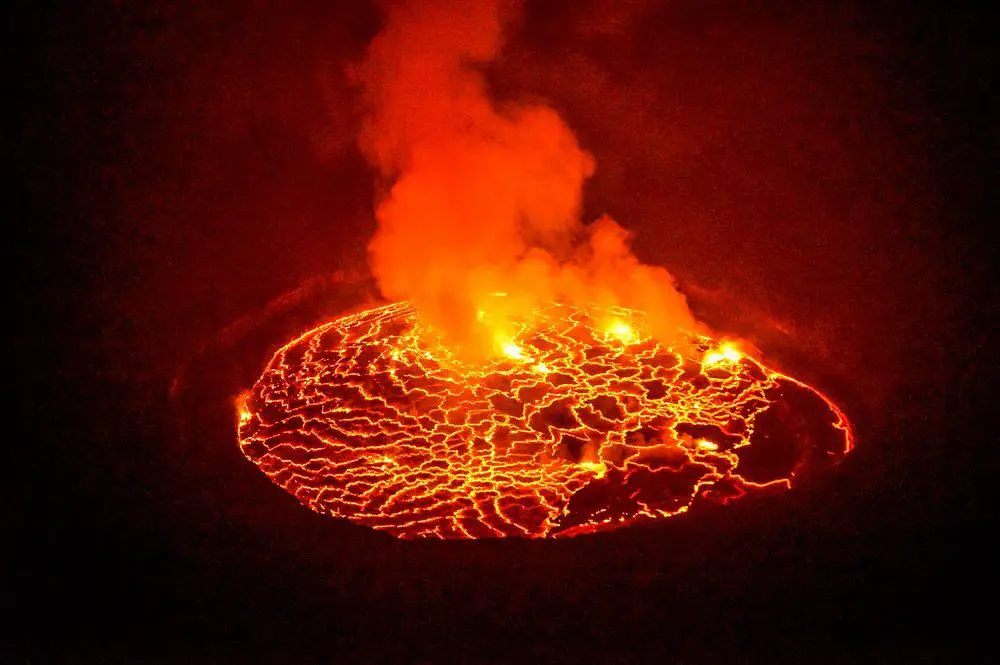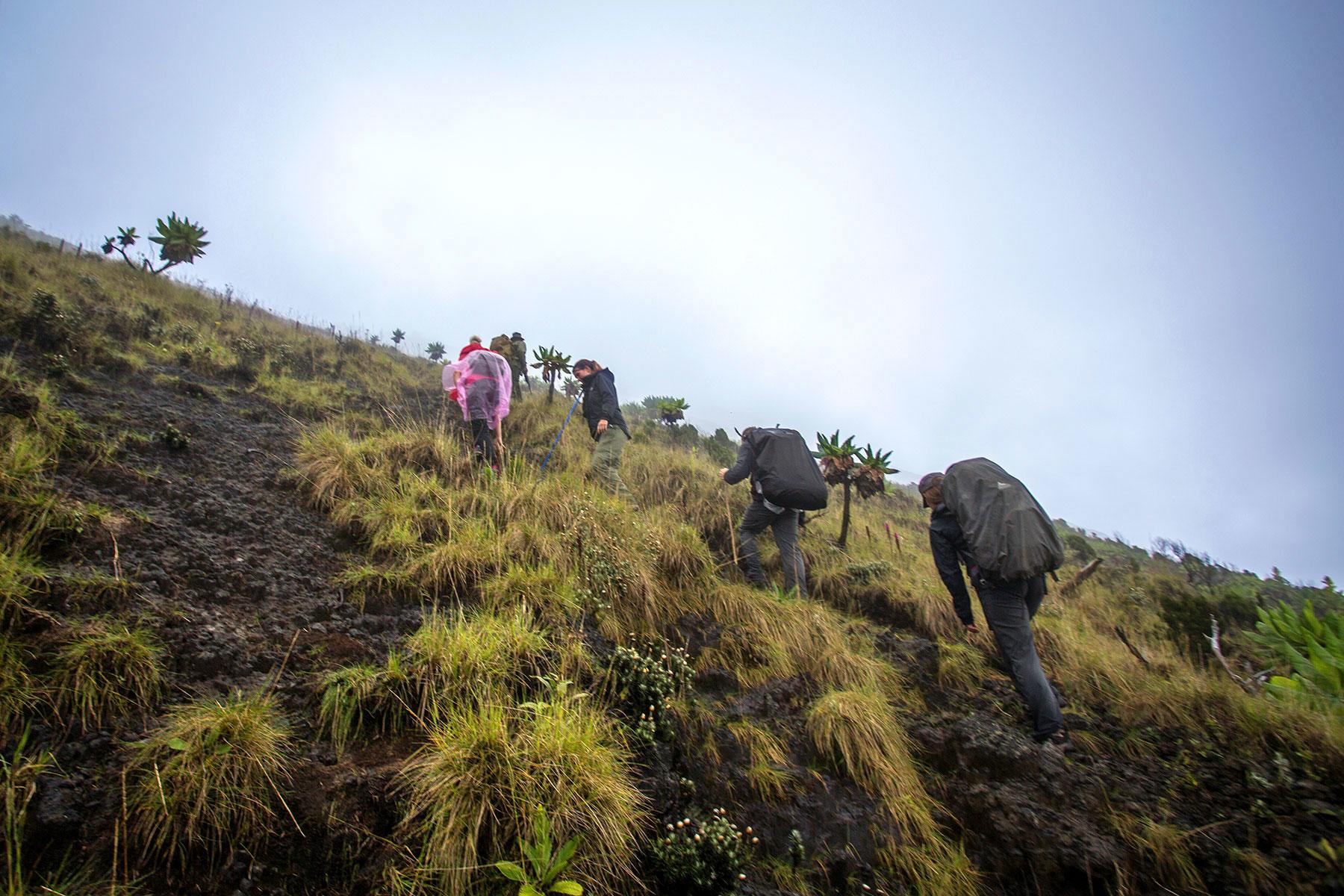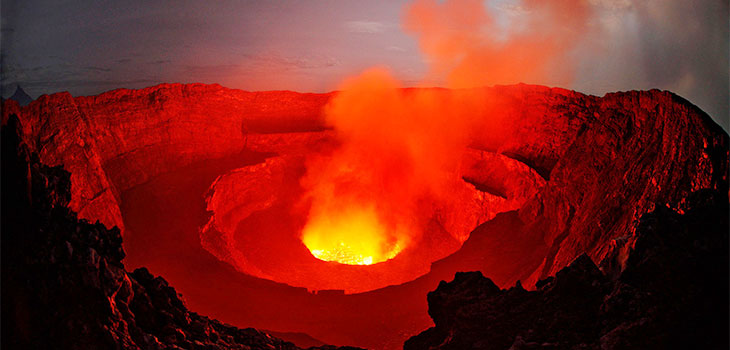“The volcano is like a sick person, and we have to monitor every time, every second.”
That is how Celestin Mahinda described the Nyiragongo volcano to the BBC in 2017, years after it erupted and killed dozens.
Mahinda and his team of scientists frequently monitor the Nyiragongo in the eastern Democratic Republic of Congo. They are based in the nearby town of Goma and have so far saved lives by warning locals of looming eruptions.
The last time the volcano erupted was in 2002. The disaster put parts of Goma in ruins as 90,000 people lost their homes and scores died.

Photo: congodiscoverysafaris.com
Currently one of the world’s most active volcanoes, Nyiragongo is located in the Western branch of the Rift Valley near Lake Kivu and the Congolese-Rwandan border.
“It is 11,385 feet (3,470 metres) high, with a main crater 1.3 miles (2 km) wide and 820 feet (250 metres) deep containing a liquid lava pool. Some older craters on the mountain are noted for their plant life,” writes Britannica.

Photo: Africa Geographic
Besides the 2002 disaster that displaced many and created a refugee crisis, Nyiragongo killed some 2,000 people in 1977.
Time writes that so many factors are taken into consideration when assessing which volcanoes are the most dangerous in the world. These include the types of magma that emerge during eruptions and each volcano’s eruption history, as well as, the population density surrounding active volcanoes.

Photo: Wikipedia
At the moment, some parts of Goma are built around the solidified lava but people are now aware of the risks, thanks to scientists who monitor the situation regularly.
“We call him General Nyiragongo,” a local tour guide was quoted by National Geographic. “Because when he comes, everyone runs.”
At night, it boils and glows, but as of 2017, there have been no warning signs, attracting scores of tourists to the site.

Photo: wondermondo.com
Virunga, Africa’s oldest national park, has been offering treks to Nyiragongo’s lava lake, the largest in the world.
Despite the pockets of violence, economic and health challenges in the country, the volcano has been “a good neighbor,” a local journalist told National Geographic.
“He keeps our weather cool, he makes stones for us to build with, he brings people and money to our country.”

Photo credit: Global Volcanism Program – Smithsonian Institution
For those looking for a hiking adventure, here’s how to get to the top of the volcano and experience the red glow of the world’s largest lava lake.
But before your trip, check current news outlets for volcanic eruptions for your safety.

Photo: Drink Tea & Travel
Getting there
You can fly into Kigali, Rwanda and head to Goma, Congo. From there, you can rent a car to take you to the Virunga National Park. But before this, you should have booked your trip through the Virunga Park service website or a tour company. And try to reach the starting point as early as possible since hiking starts early in the morning.

Photo: fodors.com
Packing
It is ideal to take along items like blanket, jacket, socks, gloves and overcoat as Nyiragongo might be frigid in the evening and you might get cold. Pack these things into a backpack. Don’t forget your food and drinks, as well as, a camera and walking sticks.

Photo: hakunamatatasafaris.com
The hike
The hike starts at 6,510 feet and ends when you reach the summit; that makes it 10 miles of walking up the mountain, writes Adrienne Jordan, an outdoor and adventure travel writer. “You only get four stops of 20 minutes to rest, but not to worry if you are a slow hiker, the whole group has to stick together and take the pace of the slowest member. There will also be two armed guards, one who goes first and another one who goes at the back. They check that no one is left behind,” she adds.

Photo: Simba Africa Expeditions
Others who have been to Nyiragongo advise that you keep a safe distance and follow instructions given by the ranger while you enjoy the red volcanic row. Note that there are times you might not see the lava. Jordan explains that usually there is fog on the top of the lava, covering the crater.










